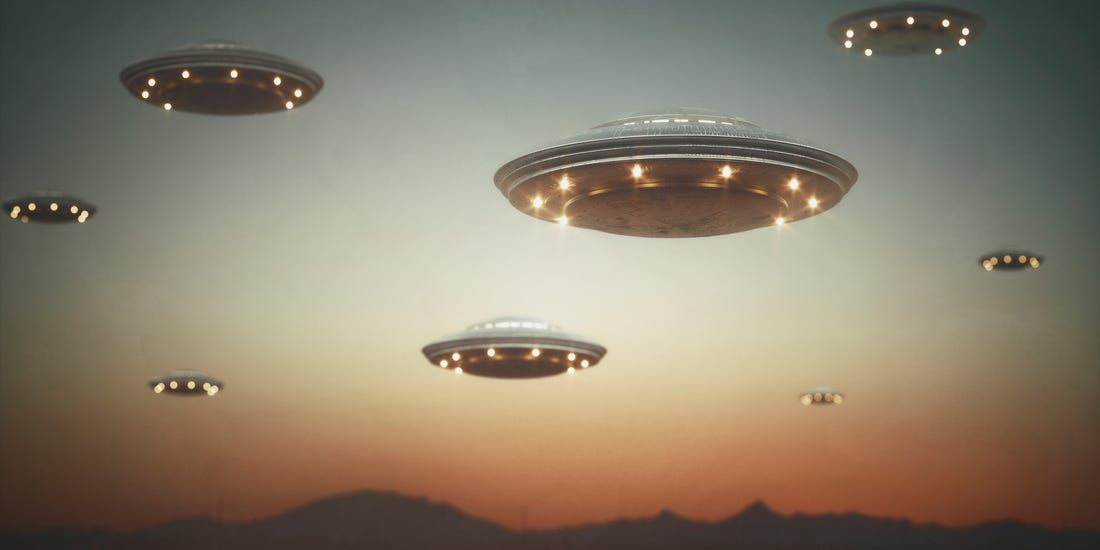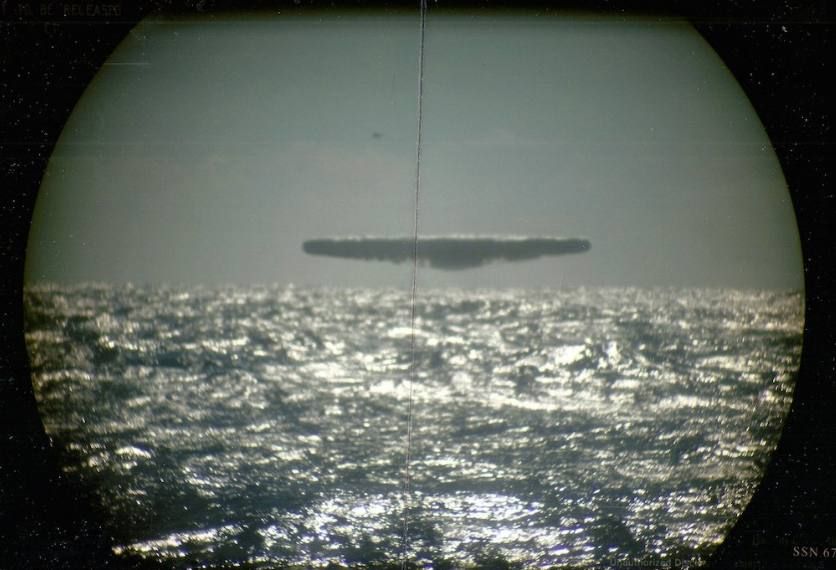Scientists Call for Serious Study of UAPs – ‘Unidentified Aerial Phenomena’
Article by Leonard David October 12, 2020 (space.com)
• The US Navy recently admitted that strangely behaving objects caught on video by Navy jet pilots, radar operators and technicians are genuine ‘UAP’s or ‘unidentified aerial phenomenon’. In August, the Navy established a ‘UAP Task Force’ to investigate the nature and origin of these UFOs and to determine whether they pose a threat to U.S. national security.
• These observed UAPs (or UFOs) can purportedly accelerate in the 1000’s of G-forces – far more than a human can survive. Furthermore, there’s no air disturbance visible and they don’t produce a sonic boom.
• Philippe Ailleris, a project controller at the European Space Agency’s Space Research and Technology Center in the Netherlands, has created the ‘Unidentified Aerospace Phenomena Observations Reporting Scheme’, a project to facilitate the collection and study of UFOs reported by both amateur and professional astronomers. This comes as more scientists are calling for a more scientific study of the UFO phenomenon.
• “There’s a need for the scientific study of UAPs and a requirement to assemble reliable evidence, something that could not be so easily ignored by science,” Ailleris told Space.com. Recent technological advances in open tools and software, cloud computing and artificial intelligence with machine and deep learning offer scientists new possibilities to collect, store, manipulate and transmit data.
• Ailleris points to orbiting civilian satellites as a good way to search for UFOs. One avenue is to tap into the ‘free-of-charge’ imagery collected by the European Union’s Copernicus satellites, managed by the European Commission in partnership with ESA. More and more Earth-scanning spacecraft are being launched by private companies that can be used to view the planet and detect possible UFOs. “This evolution will stimulate forward-thinking ideas across different domains, including controversial topics,” Ailleris said. “And why not the UAP research field?”
• Kevin Knuth is a former scientist with NASA’s Ames Research Center and is currently an associate professor of physics at the University at Albany in New York. Knuth is working with Ailleris to employ satellite imagery to detect and monitor UFOs. “We are looking into using satellites to monitor the region of ocean south of Catalina Island where the 2004 Nimitz encounters occurred,” Knuth said.
• The Catalina Island area will also be the target for a 2021 UAP expedition (see here for UAPx website) carried out by Knuth and other researchers “to provide unassailable scientific evidence that UAP objects are real, UAP objects are findable and UAP objects are knowable,” according to the UAPx website. Knuth’s UAPx team includes military veterans and physicists, as well as research scientists and trained observers that will use specialized gear to observe possible UFO activity.
• “I certainly think that (UFOs) deserve to be studied, just like we would do with any other problem in science,” said Jacob Haqq-Misra, an astrobiologist with the Blue Marble Space Institute of Science in Seattle, Washington. In August, Haqq-Misra helped organize a NASA-sponsored interdisciplinary workshop, called TechnoClimes 2020 (see here for website), that sought to prioritize and guide future theoretical and observational studies of non-radio “technosignatures” – observational manifestations of technology that can be detected through astronomical means.
• Ravi Kopparapu is a planetary scientist at NASA’s Goddard Space Flight Center in Greenbelt, Maryland. “There’s a fundamental problem that we have right now to scientifically study UAP,” Kopparapu said. “We do not have proper data collection of this phenomena that can be shared among interested scientists to verify claims and filter out truly unexplainable events.” He views the UAP/UFO phenomena as a scientifically interesting problem, driven in part by observations that seem to defy the laws of physics. But Kopparapu is wary of using the term “extraterrestrial”. “That’s because there is absolutely no concrete evidence that I know of that points to them as being extraterrestrial,” he said.
• The entire UFO topic has been maligned by being associated with ET, says Kopparapu. This prevents a thorough scientific investigation by the science community because of a taboo surrounding ET claims. “I think people immediately think about ‘aliens’ when they hear UFOs/UAPs, and I want scientists to not fall for that,” Kopparapu said. “[D]on’t let preconceived ideas cloud judgments. Have an open mind. Consider this as a science problem. If it turns out these have mundane explanations, so be it.”

The U.S. Navy recently admitted that, indeed, strangely behaving objects caught on video by jet pilots over the years are genuine head-scratchers. There are eyewitness accounts not only from pilots but from radar operators and technicians, too.

In August, the Navy established an Unidentified Aerial Phenomena (UAP) Task Force to investigate the nature and origin of these odd sightings and determine if they could potentially pose a threat to U.S. national security.
The recently observed UAPs purportedly have accelerations that range from almost 100 Gs to thousands of Gs — far higher than a human pilot could survive. There’s no air disturbance visible. They don’t produce sonic booms. These and other oddities have captured the attention of “I told you so, they’re here” UFO believers.

But there’s also a rising call for this phenomenon to be studied scientifically — even using satellites to be on the lookout for possible future UAP events.
Philippe Ailleris is a project controller at the European Space Agency’s Space Research and Technology Center in the Netherlands. He’s also the primary force behind the Unidentified Aerospace Phenomena Observations Reporting Scheme, a project to facilitate the collection of UAP reports from both amateur and professional astronomers.
There’s a need for the scientific study of UAPs and a requirement to assemble reliable evidence, something that could not be so easily ignored by science, Ailleris told Space.com.
It is necessary to bring scientists objective and high-quality data, Ailleris said. “No one knows where and when a UAP can potentially appear, hence the difficulty of scientific research in this domain.”
 New tools
New tools
Recent years have seen rapid advances in information and communication technologies — for example, open tools and software, cloud computing and artificial intelligence with machine and deep learning, Ailleris said. These tools offer scientists new possibilities to collect, store, manipulate and transmit data.
Ailleris points to another potent tool. “The location over our heads of satellites is the perfect chance to potentially detect something,” he said.
Working in the space sector, it occurred to Ailleris that Earth-observation civilian satellites could be used to search for UAPs. One avenue is tapping into free-of-charge imagery collected by the European Union’s Copernicus satellites, an Earth-observing program coordinated and managed by the European Commission in partnership with ESA.
FAIR USE NOTICE: This page contains copyrighted material the use of which has not been specifically authorized by the copyright owner. ExoNews.org distributes this material for the purpose of news reporting, educational research, comment and criticism, constituting Fair Use under 17 U.S.C § 107. Please contact the Editor at ExoNews with any copyright issue.



